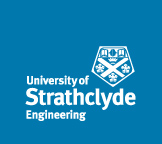With the first semester for the project now complete, it would be a good time to take a look at how far the project has progressed and demonstrate what we have achieved so far.
After the initial background research had been completed work began on the Control Room system using Siemens SCADA WinCC software. We began work constructing the fundamental schematic of the Microgrid as well as working on reading in historically archived data. In parallel to this practical work our interim report was completed as required by the University. A copy can be found here (Interim) if you want a more in depth view on what we have done and what we hope to achieve. However if you don’t want to read through our 60 page document (can’t understand why you wouldn’t!) then here is a brief review of our current results. Shown below is the fundamental schematic of the Universities Microgrid which is currently being configured to show when switches are on/off and lines are energised, amongst others.
Since the interim report we have made substantial progress as we aim to have a fully functioning fundamental system by mid-January. The video below shows our current system with each coloured section to represent specific sections of the overall schematic once configurations have been finalised. Over the next couple of weeks we hope to complete the fundamental system before beginning our investigation into advanced visualisation techniques becomes our main focus.
To give an idea of the sort of visualisation techniques we hope to incorporate during the second semester one idea involving the visualisation of system frequency is shown below. We will discuss several ideas as we attempt to add innovative and interesting data visualisation on top of our fundamental control room design.
The level of project work being completed is expected to ramp up over the next few months as we look to complete our control room system in time for the project Tradeshow in April. We hope to produce the next blog some time before then as preparations for the completion of our Masters project begin to take place. Thanks again for reading and Happy New Year!
Connor
µCR Strath
Image References
- University of Strathclyde Engineering Faculty Logo http://www.strath.ac.uk/engineering/




